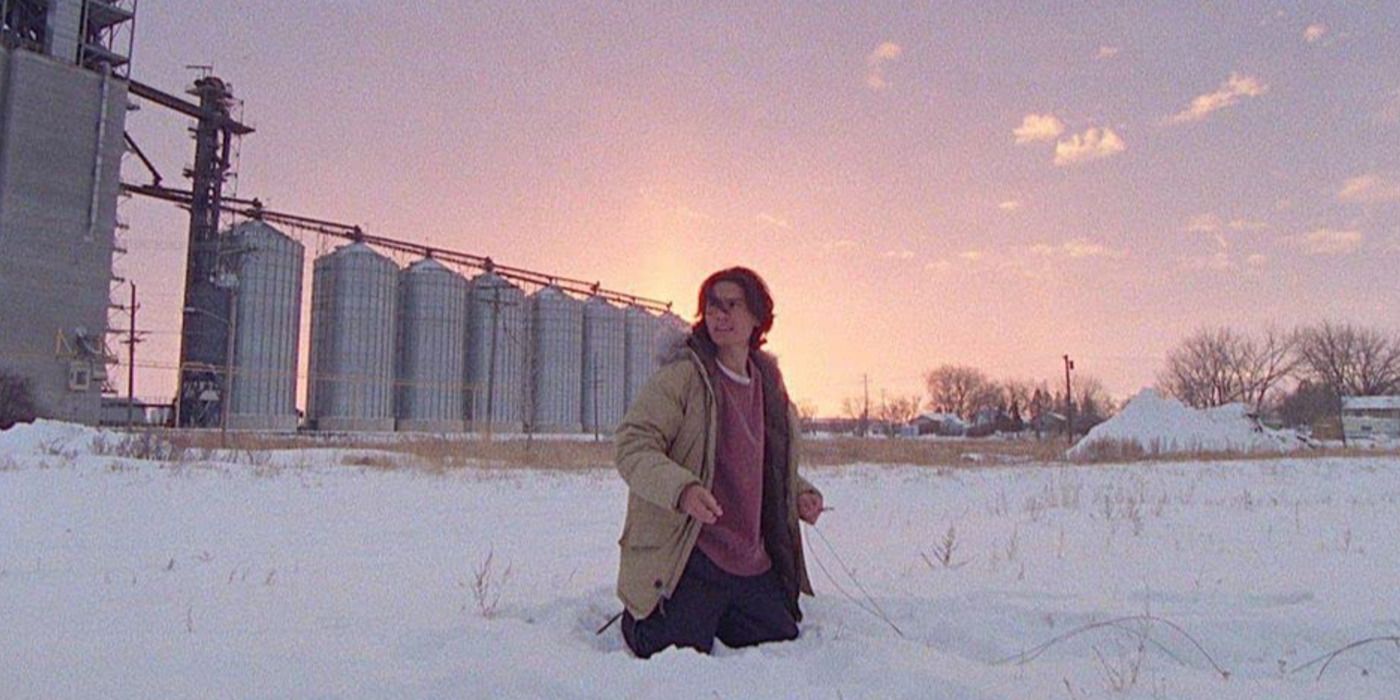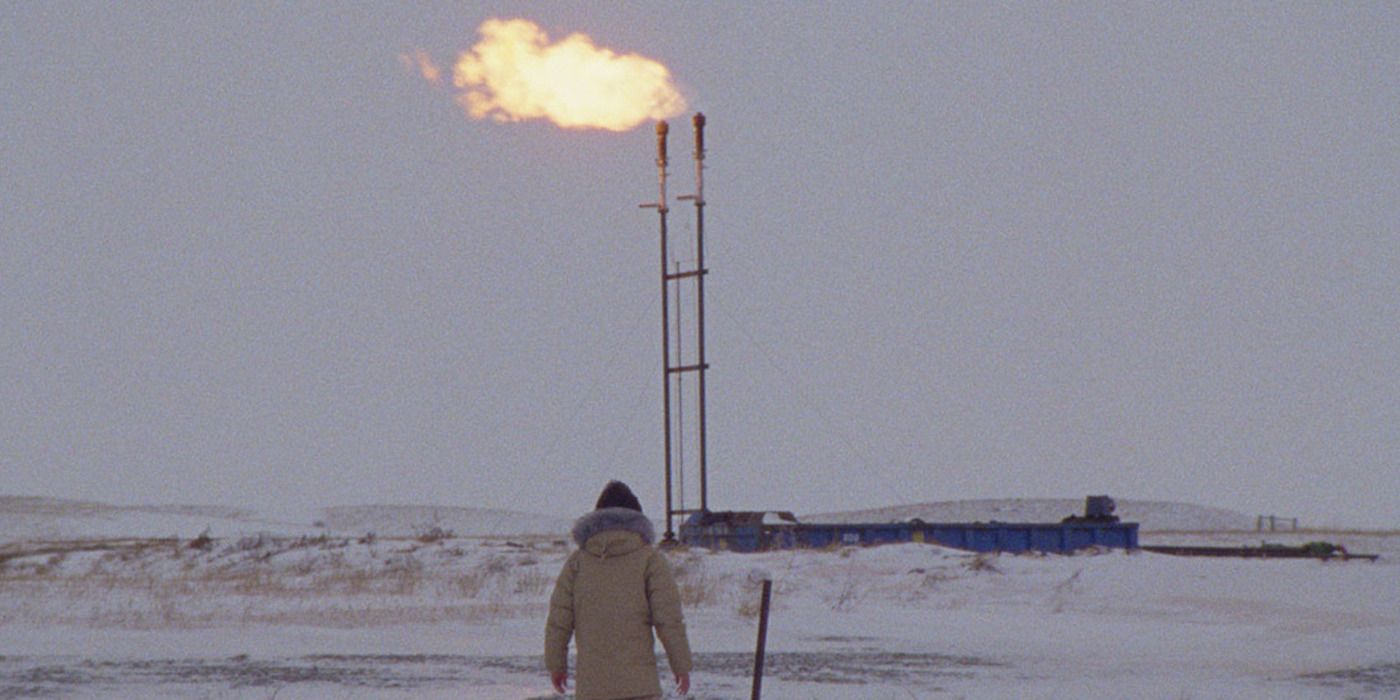The Big Picture
- How to Blow Up a Pipeline is an underrated eco-thriller that uses heist and Western film elements to highlight the dangers of climate change and the moral complexities of sabotage.
- The film maintains a realistic tone throughout, emphasizing the disruption and consequences of the activists' actions, while also presenting their cause as an act of self-defense.
- The FBI expressed concern about the film's radical message, issuing warnings and urging increased security around energy outlets. The film's message and its impact are a testament to its strength and potential to ignite change.
Rarely does a movie actively inspire its audience to take action as intensely as this year's How to Blow Up a Pipeline, a film so realistic and procedural from the perspective of its radical climate activists that it caught the attention of the FBI. Directed by Daniel Goldhaber, who broke into the scene in 2018 with his cerebral Netflix horror Cam, this underrated eco-thriller uses the structural beats of heist and Western films to craft a deliciously entertaining feature that pulls no punches with regard to the dangers of climate change and the moral ambiguities of sabotage for a righteous cause. While protest movies tend to contain their commentary on historical events, using the context of the modern cultural climate to discuss the outdated ways of the old, Goldhaber’s sophomore feature is unique in that it doesn’t just emphasize the present, but the future as well.
Adapted from Andreas Malm’s non-fiction novel of the same name, the likes of which reads like a manifesto arguing for sabotage as a righteous form of environmental activism, How to Blow Up a Pipeline follows a group of eight activists who attempt to demolish an oil pipeline in an attempt to directly combat oil refineries and their pollution of the earth. Whether it’s a terminal cancer diagnosis from growing up in proximity to chemical plants, the death of a parent over a freak heat wave, the corporate invasion of one’s ancestral property, or simply the promise of an adrenaline rush, each member of the pipeline hit squad is remarkably in it for different reasons. Coming together like a band of outlaws, the key distinction between them and the charming thieves of other heist movies is that no one on this team is in it for personal gain.
What Does ‘How to Blow Up a Pipeline’ Take From Classic Westerns?
The Western connection is strong with this one, with its depiction of violence matching that of The Wild Bunch and Shane in their time. Although How to Blow Up a Pipeline doesn’t feature any shootouts or gunfights, the violence depicted is of almost greater concern for the fact that it encourages its audience to fight authority in spite of the personal risk involved. It’s not just the wide, Texan landscapes that irk the Western comparisons either. Daniel Goldhaber specifically chose to model his film after Westerns to illustrate how the fight between man and state is deeply rooted within American culture. He cites The Great Train Robbery specifically for the fact that it’s the first heist movie ever made, claiming that the premise of “a gang of outsiders taking back agency and control from the man” is one universally understood by Americans and deeply ingrained into the culture. Just as Westerns interrogate the individualism of its characters in the face of the jaw-dropping Western frontier, through its masterful collage of genres, How to Blow Up a Pipeline becomes just as much about finding one’s place in a dying world as it is about eco-terrorism.
Daniel Goldhaber Maintains 'How To Blow Up a Pipeline’s Cynical Realism Throughout
Though the phenomenal ticking clock score and flashback structure certainly sensationalize the events of the film to a strong degree, Goldhaber’s most commendable effort is the way he sustains a realistic tone all the way up to the film’s end credits. Like The Battle of Algiers, one of the most significant movies to advocate for violence in revolution, How to Blow Up a Pipeline makes several attempts to underline the fact that people’s livelihoods will be massively disrupted as a result of the group’s actions, mainly referring to the steep rise in oil prices expected after they cut off a major portion of the supply. In the face of this moral dilemma, the activists choose not to show hesitance but reinforcement towards their cause, stating that a future without gas in your car is better than no future at all. Impressively, the film’s quick production cycle ran a lightning-fast 18 months, from conception to completion, part of the reason being the absolute urgency that the climate issue demands. With mere years until changes to the climate become irreversible, as the film’s riveting tagline contends, taking drastic action is not terrorism but an act of self-defense.
After this particular rag-tag group of misfits succeeds in blowing up the pipeline, unlike Ocean’s Eleven, there’s no final assembly by a gushing fountain as the gang celebrates their conquest. Rather, the end credits consistently cut back to the individual consequences of the group’s actions, whether it’s becoming incarcerated, dying in prison, or living the rest of their lives consumed by paranoia. While the film outright encourages violent action, it doesn’t make light the issue of potentially fatal personal risk as a result of doing so. It doesn’t so much as gate keep activism for only the bravest of individuals but rather acts as an informative assessment of the dangers of environmental revolt.
How Did the FBI Respond to 'How To Blow Up a Pipeline'?
Naturally, with a film that openly attempts to radicalize its audience against the very government it's released under, major agencies showed concern. Prior to the film’s release, the FBI themselves released a total of at least 35 warnings about the film to various corporate bodies, urging them to increase security in the wake of the film’s release and carefully monitor any outside surveillance taking place around major energy outlets. This isn’t totally unwarranted, as a portion of the film’s official website dubbed ‘Take Action’ showcases a detailed map of the U.S.’s expansive network of pipelines and oil spills. It doesn’t offer any dark web links to illegal explosives, but it does urge its readers to fight for the rights of revolutionaries as when it comes to the environment, they’re fighting for yours too.
Unlike the title would suggest, the film does not provide a step-by-step instruction manual on how to make bombs. However, it does detail a method through which the activists are able to sabotage the pipeline without suffering the consequences of an oil spill as if to insist to its audience that one can be violent and responsible in their protests at the same time. While no direct action against critical infrastructure has been taken yet, the fact that it got the FBI jumpy is surely a testament to the strength of its message.
Ironically, between the film’s nail-biting set pieces and puzzle-like structure, there’s plenty to enjoy even outside the realms of activism, with an ensemble cast of young superstars in the making ranging from Kristine Froseth to Sasha Lane. Beyond the intended effect, the fact that a little American indie could attempt to ignite and shake the foundations of U.S. capitalism so boldly is a colossal feat in and of itself. With the FBI sounding its alarm, there’s no doubt that it turned the right heads, but for a matter like protecting the environment that will inevitably affect the entire global population, the only question is whether it turned enough. One can only hope that decades down the line when the climate issue is inevitably prioritized by politicians, film fans can look back on this little indie for the groundbreaking awareness it intended to spread before it was too late.




